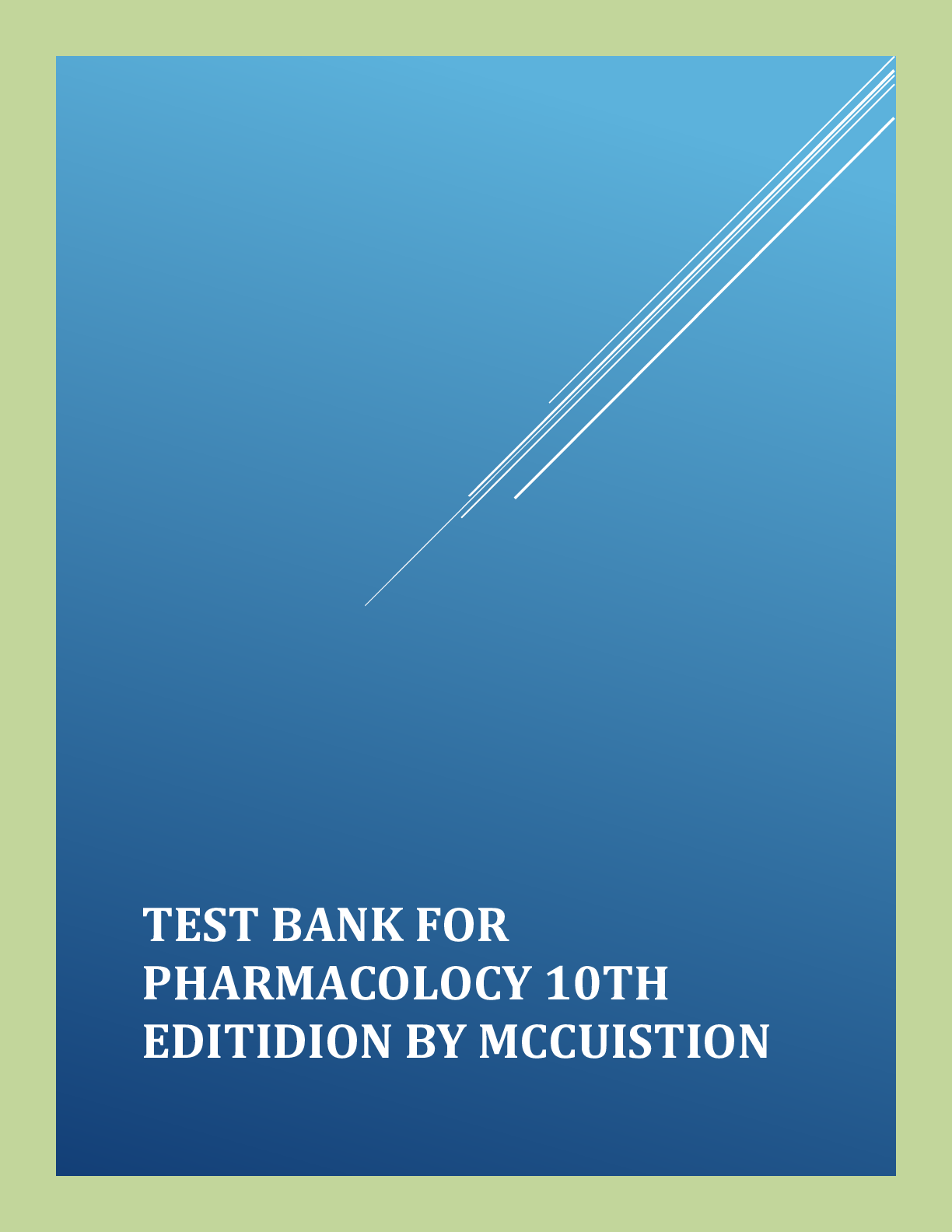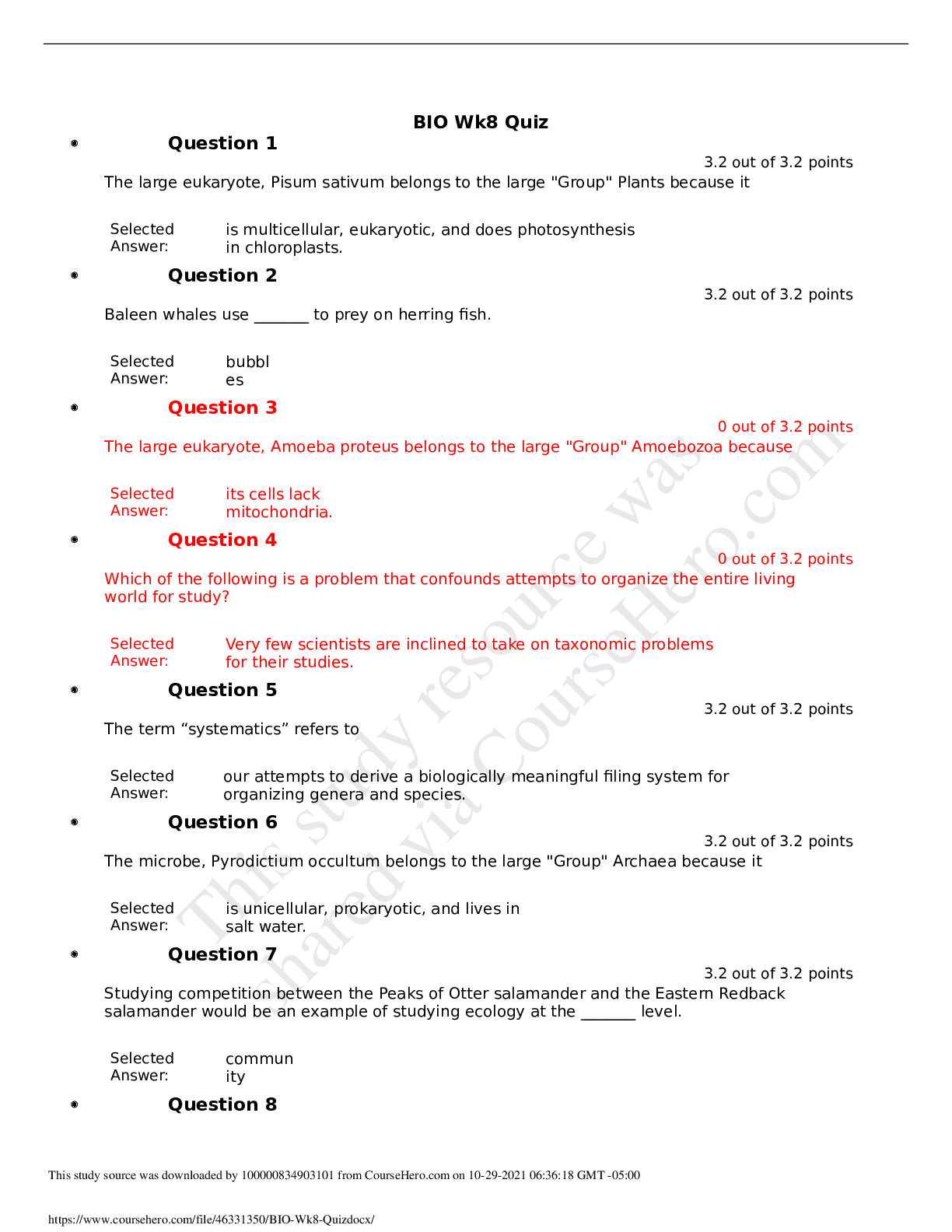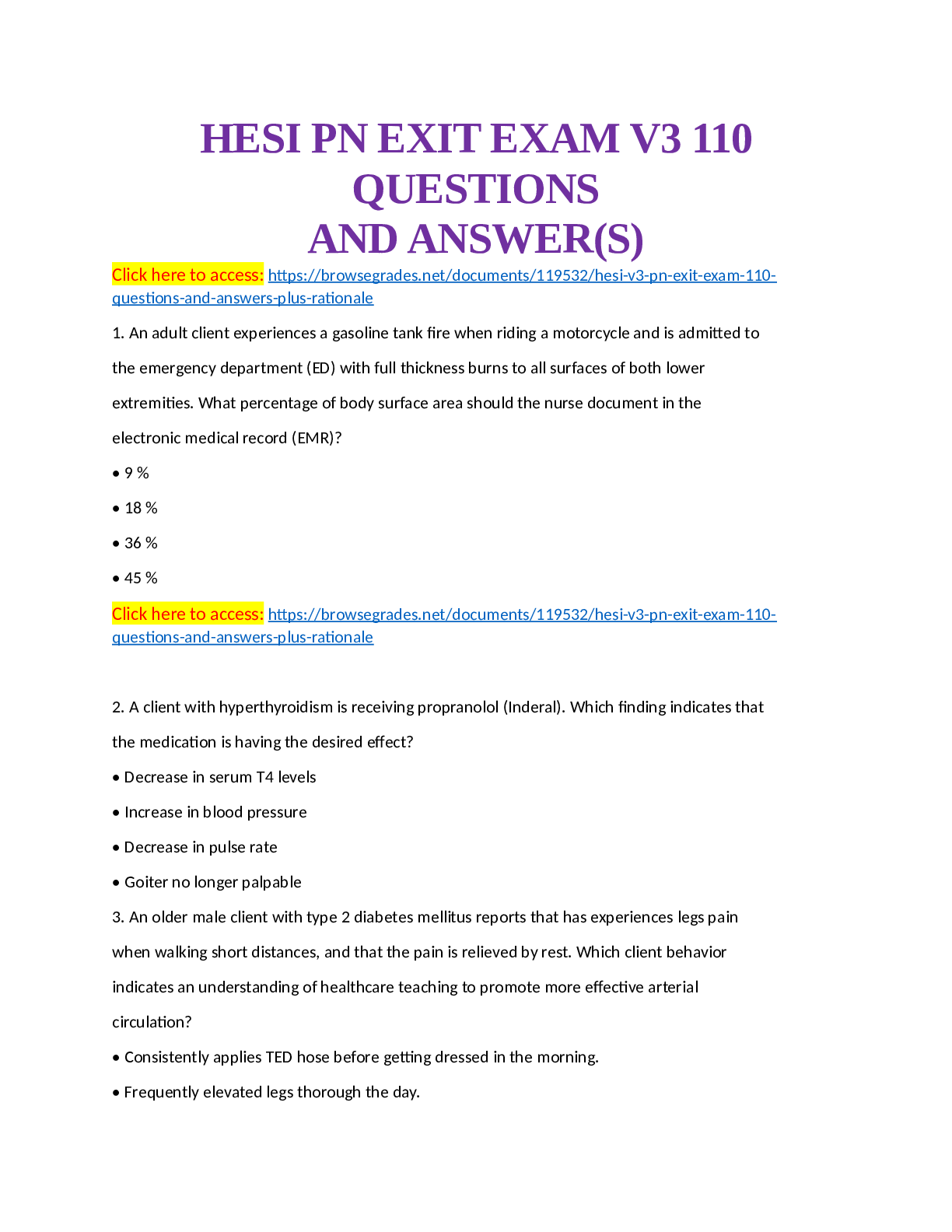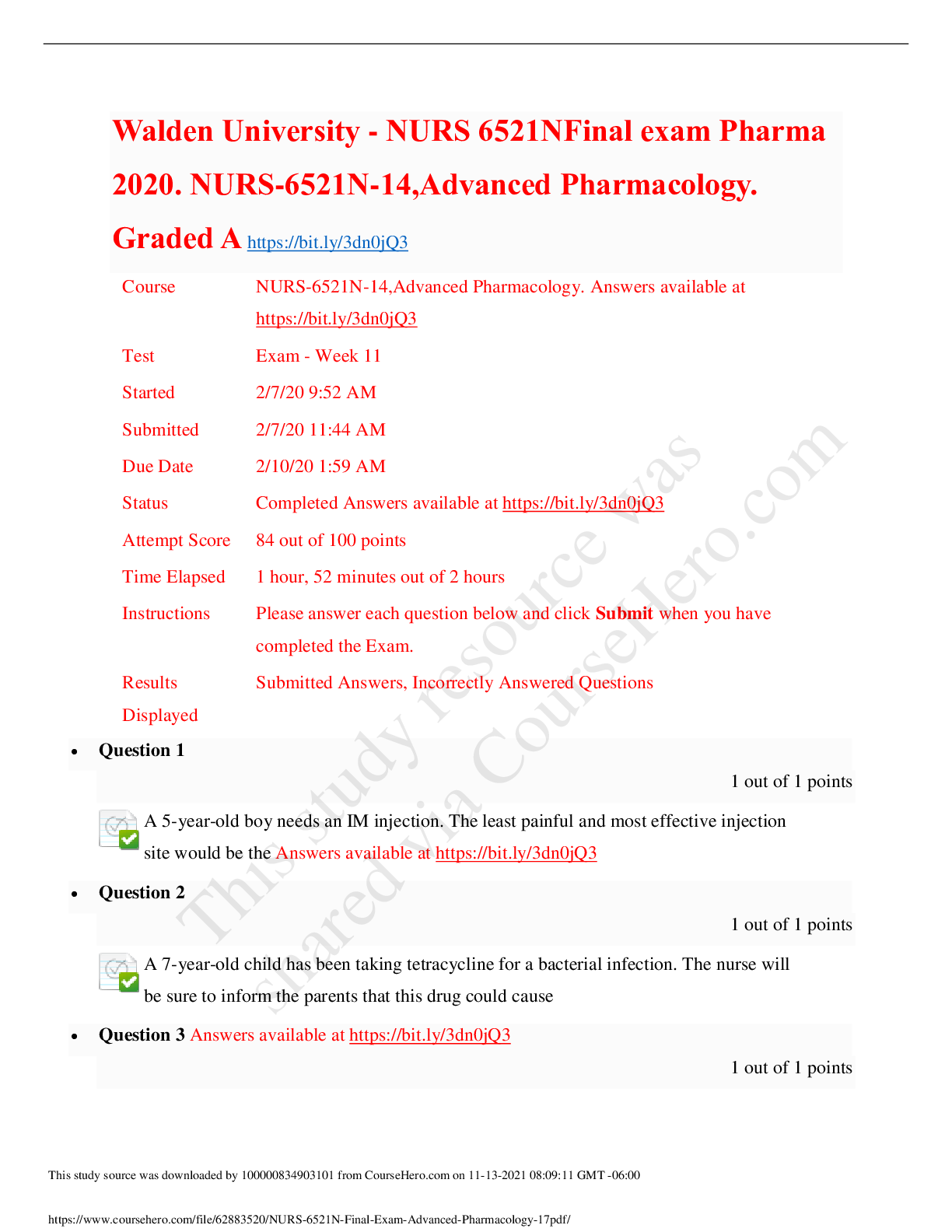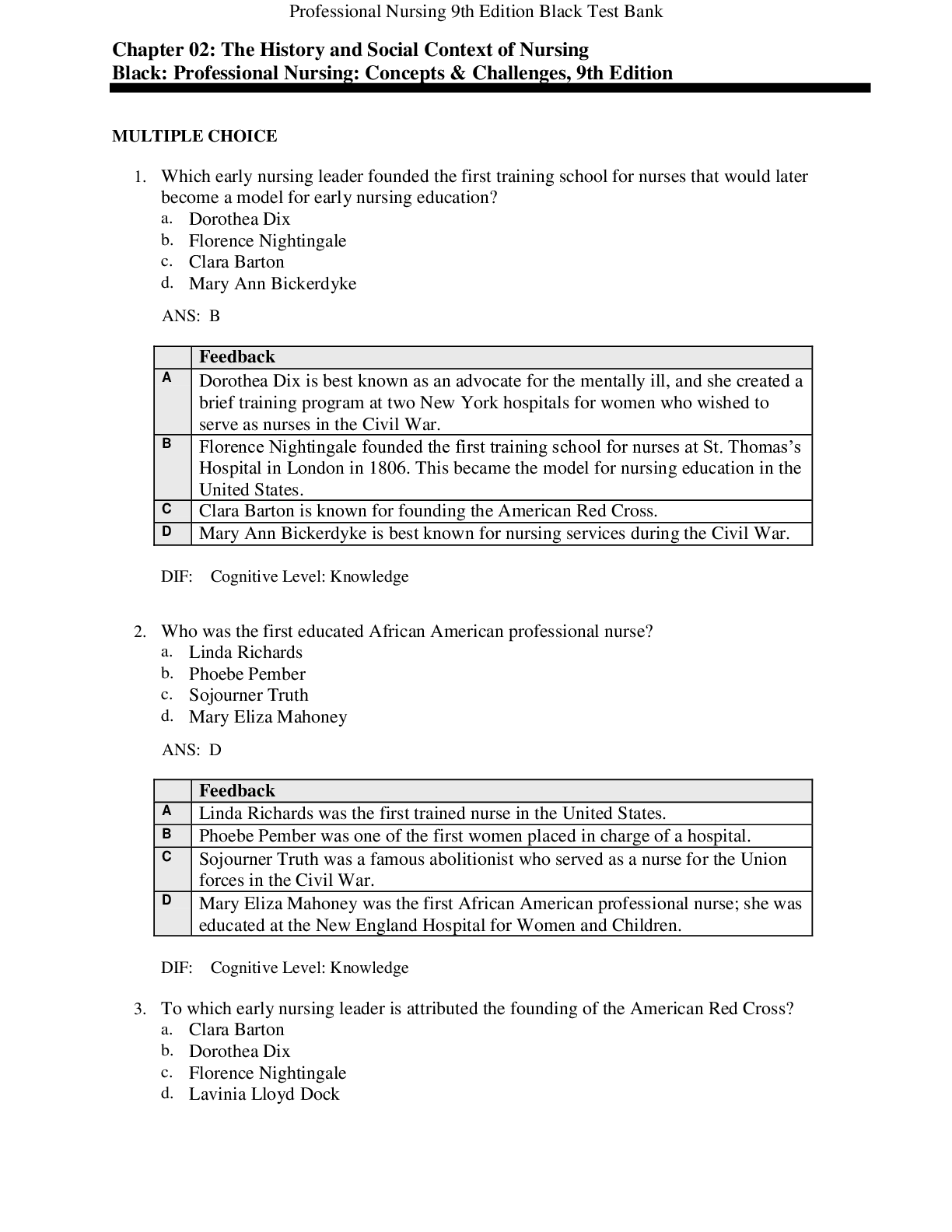*NURSING > AQA QUESTION and MARK SCHEMES > EEE-211: ANALOG ELECTRONICS FALL SEMESTER 2022-2023 (All)
EEE-211: ANALOG ELECTRONICS FALL SEMESTER 2022-2023
Document Content and Description Below
This course is a blend of theory and practice where the students build an electronic device and learn the basics of the theory behind that device. General Description of the Course This course aims... at teaching basic circuit theory and analog electronics, based on a scenario of building a transceiver. Discrete passive components and active integrated circuits are introduced and employed in the course to implement the analog signal processing required in the transceiver. Various topics in the frequency range from D.C. to 30 MHz are covered. The course is structured on a HF (High-Frequency) transceiver (transmitter-receiver), “TRC-11”, operating in the 11-meter amateur band. Students are required to get the kit and construct the transceiver in the laboratory. Block-by-block construction with tests and evaluations at various steps leads to a successful assembly and operation of the device. A successful electronics engineer must be able to analyze circuits, make designs and properly evaluate test & measurement results. Given this general requirement, lectures cover the applied theory behind the building blocks of the transceiver, in parallel with laboratory work. The topics covered are; block diagram concept, passive electronic components (resistors, capacitors, inductors, diodes, crystals, etc.), power supplies, integrated circuits as active devices, audio amplifiers, speakers, radio amplifiers, filters, oscillators, mixers and antennas are progressively introduced, alongside step-by-step assembly of the transceiver. Basic mathematical background and definitions (solution of first-order differential equations, complex arithmetic, phasors, etc.) are studied only when necessary and to the extent required for the scope of this course. All related terminology is provided. Prerequisites: PHYS 102, or consent of the Instructor. Instructors: Sections 1: Abdullah Atalar Office: EE-302 e-mail: aatalar@bilkent.edu.tr Sections 2: Emine Ülkü Sarıtaş Office: EE-306 Office hours: TBA e-mail: saritas@ee.bilkent.edu.tr Sections 3: Erdinç Tatar Office: EE-301 Office hours: TBA e-mail: etatar@ee.bilkent.edu.tr This study source was downloaded by 100000834903101 from CourseHero.com on 12-15-2022 10:42:17 GMT -06:00 https://www.coursehero.com/file/170077086/EEE211-CourseDetails-2022-2023-Fallpdf/ A+ – 2 – Course Language The course is taught in English. Therefore, communication & correspondence of any kind (during the lectures and interviews; on Moodle, etc.) has to be in English. The only exception may be discussion of private subjects. Course Material & Resources Transceiver kit: The hardware for constructing TRC-11 transceiver. Can be obtained from Metin Kayabaşı at EE-101. Textbook: EEE-211 Analog Electronics Textbook. A hard copy is included in TRC-11 kit. Electronic version will be posted on Moodle. Hand tools: Tools that will be needed in the laboratory. Each student is required to use his/her own tools, starting with the first experiment. • Oscilloscope probe (can be found at Meteksan Bookstore) • Multimeter • Soldering iron and stand, 25W, point tip (havya, sivri uçlu) • Soldering sponge (sünger) • Pocket knife (çakı) • Plastic alignment tool with fine metal screwdriver tip (ayar çubuğu) • Long-nose pliers with fine tip (ince uçlu kargaburun pense) • Diagonal cutter (yan keski) • De-soldering pump (lehim sökme pompası) • Tweezers (cımbız) • Mains Tester (kontrol kalemi) These tools can be obtained from stores such as Bauhaus, etc. If not available there, they can definitely be found in stores in Konya Sokak, Ulus (see map below). Students should not purchase solder: Lead-free solder is available in the laboratory. Standard test & measurement (T&M) instruments (oscilloscopes, signal generators, etc.) are available at the laboratory (EE-101). This study source was downloaded by 100000834903101 from CourseHero.com on 12-15-2022 10:42:17 GMT -06:00 https://www.coursehero.com/file/170077086/EEE211-CourseDetails-2022-2023-Fallpdf/ A+ – 3 – Scientific calculator: Besides the laboratory work, it will be extensively used for homework, interviews, quizzes, and examinations. Since the course is based on building electronic circuits, numerical results will be as important as analytical calculations. Complex arithmetic h [Show More]
Last updated: 2 years ago
Preview 1 out of 4 pages

Buy this document to get the full access instantly
Instant Download Access after purchase
Buy NowInstant download
We Accept:

Reviews( 0 )
$8.50
Can't find what you want? Try our AI powered Search
Document information
Connected school, study & course
About the document
Uploaded On
Dec 16, 2022
Number of pages
4
Written in
Additional information
This document has been written for:
Uploaded
Dec 16, 2022
Downloads
0
Views
49

